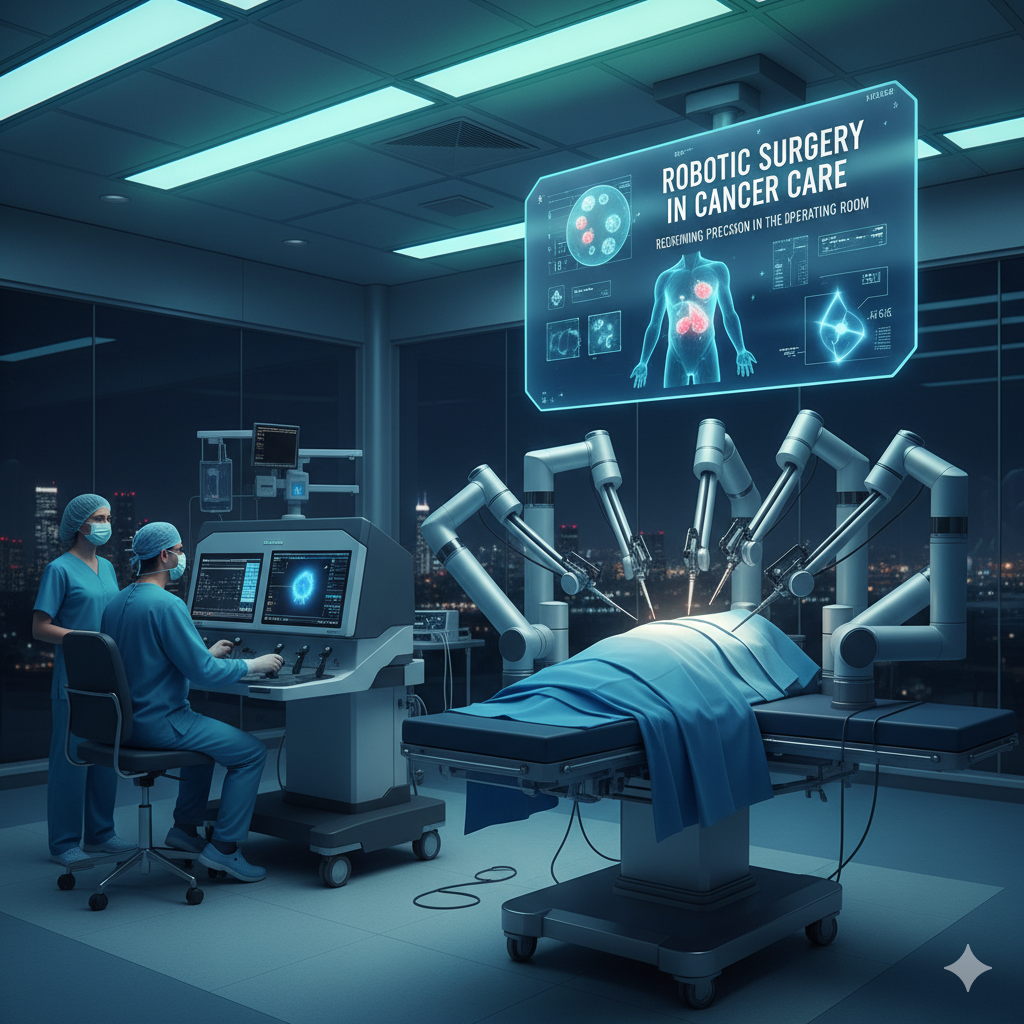
Cancer surgery has witnessed a remarkable transformation in recent years, with robotic-assisted techniques emerging as a game-changer in oncology. Traditional open surgeries, while effective, often involve larger incisions, increased blood loss, longer hospital stays, and delayed recovery. In contrast, robotic surgery integrates the precision of minimally invasive techniques with advanced technology, redefining how surgeons approach complex cancer cases.
What is Robotic Surgery in Oncology?
Robotic surgery involves the use of a high-tech robotic system controlled by the surgeon from a console. Unlike conventional laparoscopy, robotic systems offer 3D high-definition visualization, wristed instruments with a greater range of motion, and unparalleled stability. This allows oncologic surgeons to operate with extreme accuracy, even in anatomically challenging areas such as the pelvis, mediastinum, or retroperitoneum.
Advantages of Robotic Surgery in Cancer Care
- Enhanced Precision – The magnified 3D view and fine instrument control enable precise tumor excision while preserving surrounding healthy tissues and vital structures.
- Minimally Invasive Approach – Smaller incisions reduce post-operative pain, minimize blood loss, and lower infection risk.
- Faster Recovery – Patients experience shorter hospital stays and quicker return to daily life compared to open procedures.
- Better Functional Outcomes – In cancers involving the prostate, rectum, or head & neck, robotic surgery helps preserve nerve function, continence, and speech/swallowing abilities.
- Oncological Safety – Studies demonstrate equivalent, and in some cases superior, cancer clearance compared to traditional approaches.
Key Cancer Surgeries Performed with Robotic Assistance
- Urologic Cancers – Radical prostatectomy, partial nephrectomy, and bladder cancer surgeries.
- Gynecologic Cancers – Hysterectomy, pelvic lymph node dissection, and endometrial/ovarian cancer procedures.
- Gastrointestinal Cancers – Colorectal resections, gastric cancer surgeries, and hepatobiliary procedures.
- Thoracic Cancers – Lung and mediastinal tumor resections.
- Head & Neck Cancers – Transoral robotic surgery for oropharyngeal cancers.
The Future of Robotic Oncology
With continuous advancements, robotic surgery is becoming more accessible and refined. Integration of artificial intelligence (AI), augmented reality (AR), and machine learning into surgical platforms will further enhance tumor detection, surgical planning, and precision. Research is also expanding into single-port robotic systems, enabling surgeons to operate through a single small incision with improved cosmetic outcomes.
Conclusion
Robotic surgery is not just an innovation—it represents a paradigm shift in cancer care. By combining technology with surgical expertise, it offers patients safer, less invasive, and highly precise treatment options. As adoption grows globally, robotic-assisted oncology surgery is set to redefine the future of cancer treatment, ensuring better survival and quality of life for patients.